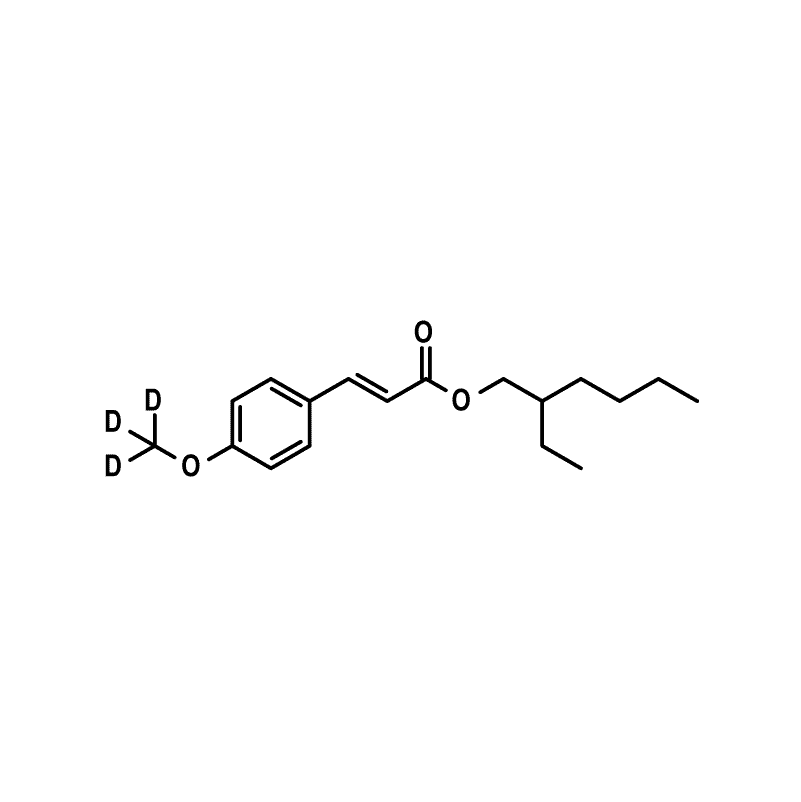Wir stellen unsere neu synthetisierten und markierten UV-Absorber vor, die häufig als Sonnenschutzmittel und in vielen kosmetischen Produkten eingesetzt werden.
2-Ethylhexyl-4-methoxycinnamat und Ethyl-trans-4-methoxycinnamat-d3 wurden für die Aufnahme in die 3. Beobachtungsliste als Substanzen ausgewählt, die gemäß der EU Wasserrahmenrichtlinie überwacht werden sollen, wie im technischen Bericht des Joint Research Centre (Wissenschafts- und Wissensdienst der Europäischen Kommission) beschrieben. Nach Angaben der European Chemicals Agency (ECHA) wird EHMC als persistent, bioakkumulativ, und toxisch bewertet, und besitzt möglicherweise endokrinschädlichen Eigenschaften. Wissenschaftliche Erkenntnisse deuten auch auf Auswirkungen von EHMC auf die Reproduktion und eine mögliche Rolle bei DNA-Schäden hin.
Referenzen:
- Joint Research Centre Technical Report, European Commission, 2020. „Selection of substances for the 3rd Watch List under the Water Framework Directive“
- Lee I et al. Chemosphere, 2019. “Two-generation exposure to 2-ethylhexyl 4-methoxycinnamate (EHMC) in Japanese medaka (Oryzias latipes) and its reproduction and endocrine related effects“.
- Sharma et al., Science Of The Total Environment, 2017. “Different DNA damage response of cis and trans isomers of commonly used UV filter after the exposure on adult human liver stem cells and human lymphoblastoid cells“
Item no. 20125
2-Ethylhexyl 4-methoxycinnamate-d3 (EHMC)
Synonyms: Octinoxate-d3; Octyl methoxycinnamate-d3; Uvinul MC80

Item no. 20123
Synonyms: 2-Ethoxyethyl 3-(4-[D3]-methoxyphenyl)propenoate; 2-Ethoxyethyl p-[D3]-methoxycinnamate

Item no. 20124
Synonyms: 3-Methylbutyl (2E)-3-(4-methoxyphenyl)acrylate; Isopentyl 4-methoxycinnamate; Isoamyl p-methoxycinnamate

Wir freuen uns auf Ihre Anfrage.


